Antenna plugs for TV: what are they and how to connect?
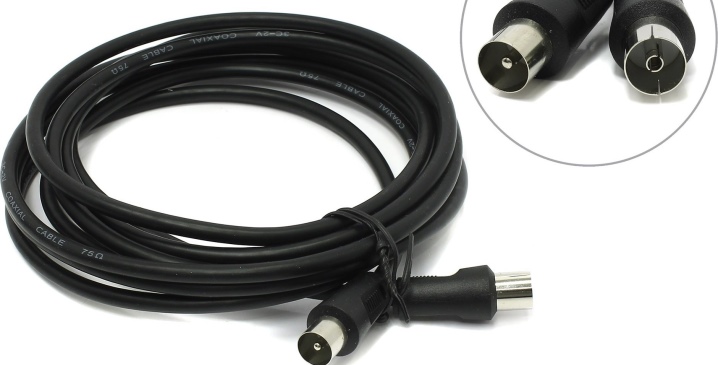
Connecting a modern TV to an external signal source will be very simple and easy if you get acquainted with the features of the structure and use of the plug. It is with the help of this device that the television cable is connected to the receiver socket and transmits high-frequency current in the direction from the shield on the stairs of the landing or the antenna on the roof directly to the living room. It is very important to correctly select the technical and operational parameters of the conductor and the ratio of working diameters, as well as correctly cut the end of the wire and wind it. We will talk about this in our review.

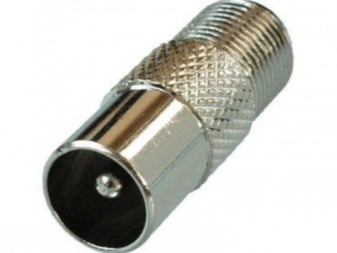
What it is?
In previous years, to connect the antenna cable to the TV plug, craftsmen resorted to soldering or selected special peripherals with a connector of a suitable size. Nowadays, everything is much simpler - each user at any time can assemble all the necessary structure, without having technical skills, using the simplest available means.
Manufacturers of components for television equipment produce connectors in accordance with the accepted international F-standard - they are called a plug.
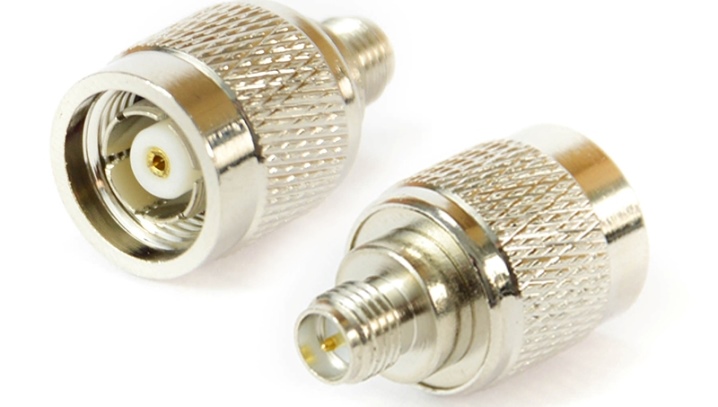
It has the form of a sleeve wound on the antenna cable.
The advantages of such an element include.
- The presence of a shielding braid near the main conductor, it is necessary in order to ensure uniformity of wave impedance and prevent loss of quality of the incoming television signal.
- The ability to combine with any kind of television signal. This plug connects equally well to both cable TV and a digital antenna.
- Ease of installation and plug connection. Any user can handle this work, even one who is very far from the world of technology and electronics.
- Since the installation of previous generations of antenna plugs requires a lot of specialized efforts, in our review we will consider only modern F-plugs, the use of which is considered more justified and expedient.
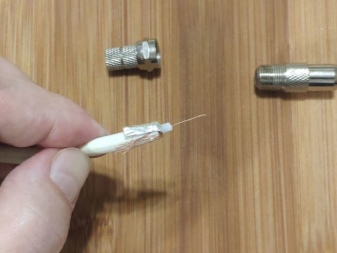
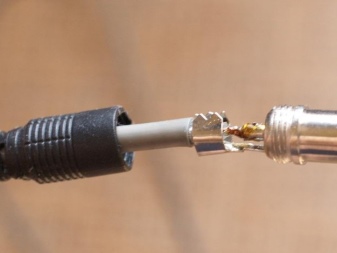
Species overview
Let's dwell a little more on an overview of the main varieties of television plugs.
Overhead
This model with an amplifier in the form of a pressed-on nut has been widely used among modern users. Its popularity can be explained very easily - it is very simple to connect such a plug. At the same time, this type of connector also has its drawbacks:
- insufficient thickness of the crimp ring often causes damage to the plug during installation;
- shortened female thread, which does not allow to fix the wire tightly in the connector;
- When screwing the connector onto the cable, the sheathing conductors often break and the protective layer twists.
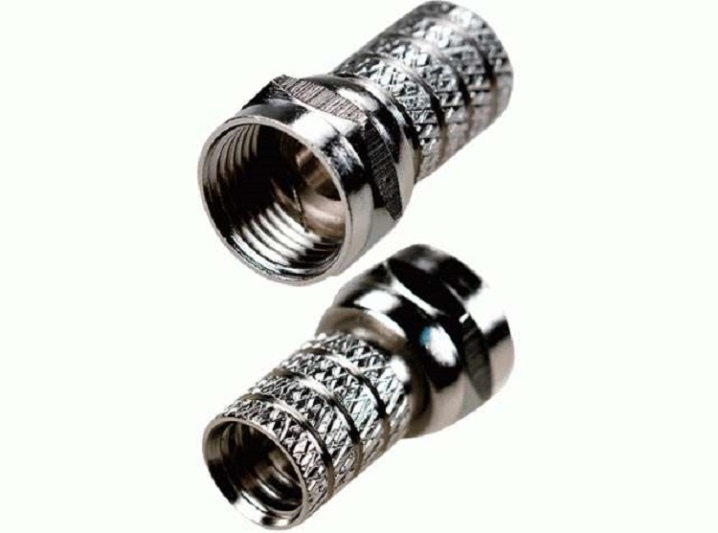
Crimp
The F crimp plug for TV is characterized by a simplified mounting method. To do this, it is necessary to prepare the cable in accordance with the basic rules, then insert the main wire into the narrow opening of the convector, cut through the foil and winding well and fix it to the outer wall using a crimp movable sleeve. We pay special attention to the fact that before clamping, it is necessary to distribute the bent layer as evenly as possible over the entire circumference of the wire.
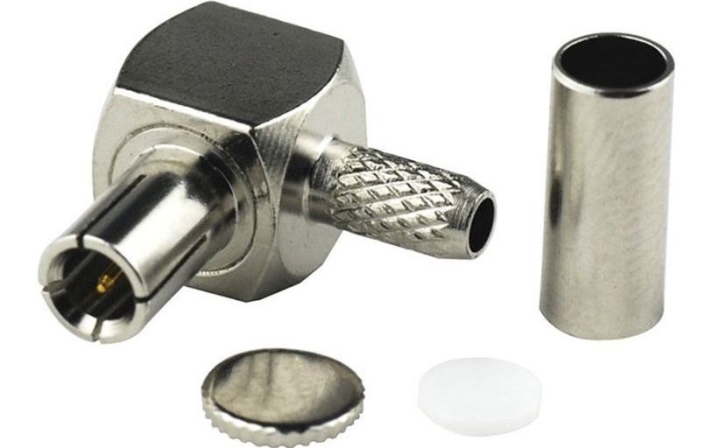
Compression
These antenna connectors for television equipment are considered the most reliable in this range. but their installation requires professional tools, as well as the specifics of understanding the features of the fastening. The fact is that the prepared cable is inserted here into the compression connector using special clamping pliers, while the crimp sleeve itself is pulled towards the functional end.
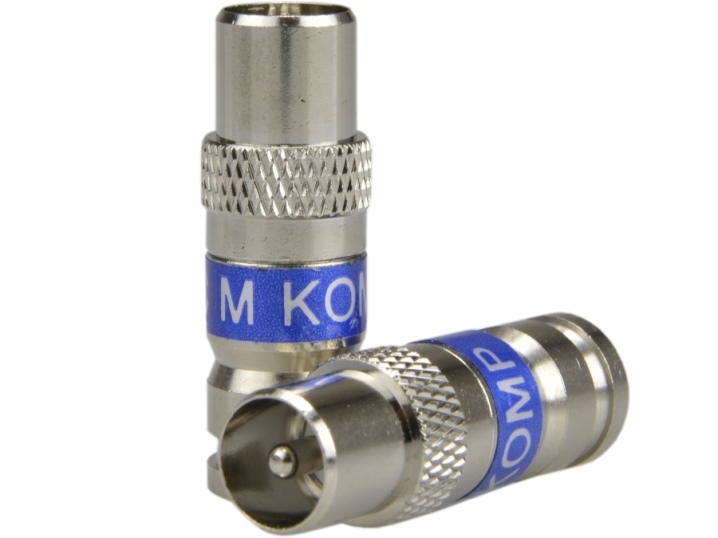
How to connect to the cable?
Before inserting the F-plug, prepare the antenna wire for further connection. To do this, with the wires remove the old plug, after which it is necessary to cut the outer insulation around the circumference so that when removing the protective covering, the braid is not damaged. The length of the incision should be 1.5-2 cm.
Further, the insulation is bent so that the television cable fully retains its technical and shielding characteristics, that is, part of the metallized hairs of the insulating layer should be open, and not smoothed directly to the cable body.
Keep in mind that the flexibility of the insulating layer directly depends on the physical strength of the user and the characteristics of the manufacturer of the peripheral device.
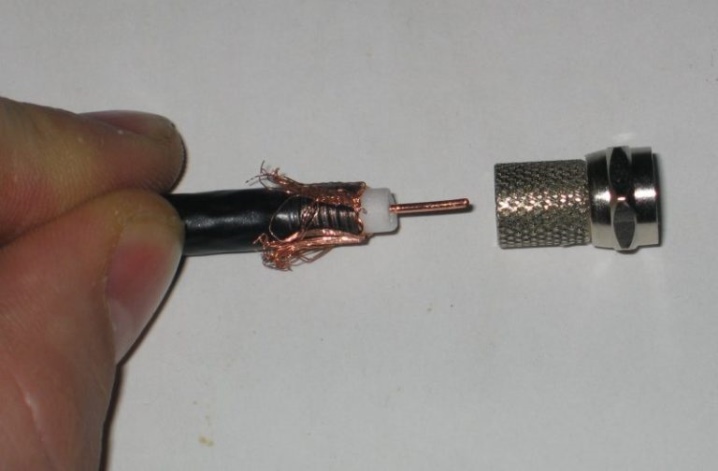
We draw your attention to the fact that the F-plug is available in stores in three sizes, therefore it is very important to make sure that the connector and the antenna cable can be matched with each other before purchasing and installing the connecting element. Regardless of their size, each connector can support satellite, analog, and digital signals.
There are several basic methods for connecting the F-plug to the cable: one involves turning the screen braid, and the other is cutting off the outer shell in the area of peripheral contacts. The first method is considered more practical and reliable, but at the same time, it will require great physical effort and utmost accuracy from the user. If for some reason you cannot cope with the twist of the braid, then you must perform the following steps.

Cut a small section of the TV wire: you will need to cut a few centimeters of the outer sheath so that the working section of the braid does not deteriorate. For this operation, you can take a sharp knife or scalpel, and you do not need to apply special physical efforts. Carefully peel back the protective layer when you see that the wire is exposed - you need to remove all unnecessary part of the protective sheath.
After that, you need to remove the additional protective layer of the wire. Depending on the type of cable_, at this stage the user will have to remove either the copper braid or the aluminum sheathing. It should be noted that some elements are protected by an aluminum layer in combination with copper.
Then you need to replace the section of the previously wrapped section of the foil.
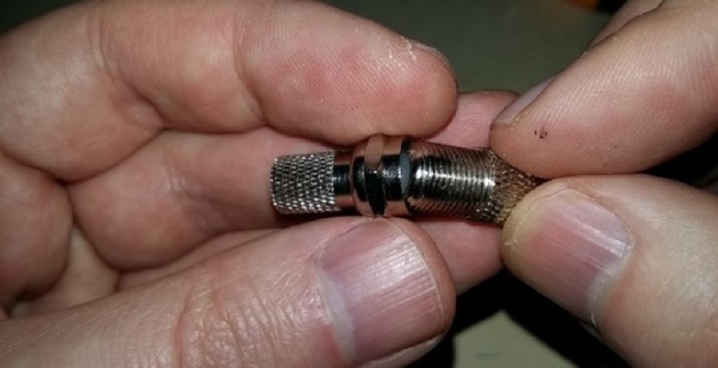
Some manufacturers, in order to strengthen the structure, additionally apply a thin layer of polyethylene to the metallized foil. - it is almost impossible to clean it off with a knife. After the cable is connected, the remaining plastic will interfere and thus prevent an accurate signal from being received. In order to reduce to zero the possible loss of picture quality and sound range, the user needs to attach the entire conductive part of the cable from the outside.
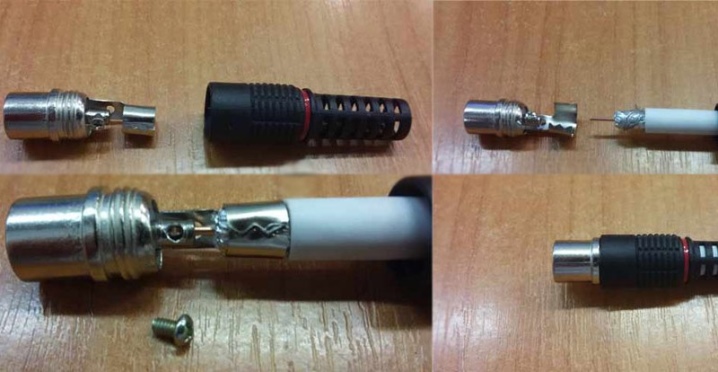
Then it is necessary to equalize the parameters of the plug to be connected and the antenna cable. It so happens that the holes of the internal threaded element of the connector have a slightly larger diameter in comparison with the bare end of the wire. In order to eliminate this difference, a couple of layers of electrical tape must be wound around the cable. It should be borne in mind that after you complete these steps, a piece of homemade insulation will have to be removed from the main conductor of the cable.
Next, the metal section of the plug is screwed onto the cable of the television antenna. In order to prevent the thread of the parts to be connected from breaking off, the installation is best done manually without the help of tools. Then you need to carefully bite off the main core of the wire.If you performed all the actions correctly, the conductor will start to knock out by 2-3 mm.
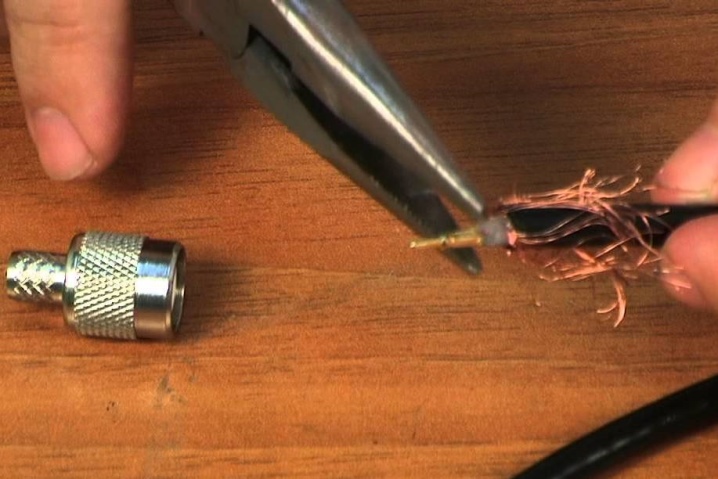
Next, the plug head is screwed onto the assembled structure, after which the user can proceed to direct the antenna to a suitable television socket. If, as a result of connecting the F-plug, you need to bend the antenna cable at an angle of more than 70 degrees, then in order to exclude chafing of the wire, experts advise taking an angled plug - it differs from the usual only in its appearance, its technical parameters and installation features are completely identical to the direct one.
If you intend to connect the cable to the TV using an old-style plug, then when connecting these elements you will have to transfer the plastic cover from the plug to the cable. Soldering will most likely be required to make a wire connection to any non-certified connector.
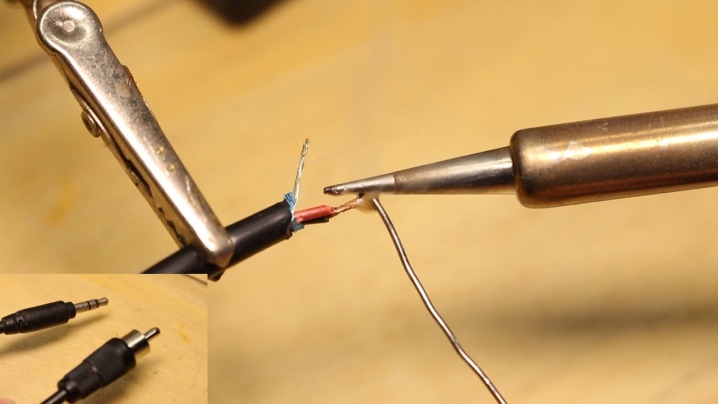
How to lengthen a wire using an adapter?
There are many reasons to lengthen the TV cable. Most often this is the installation of the TV in another place or the need to change some section of the wiring due to its mechanical damage.
Even the simplest version of such an extension will in any case require F-adapters or plugs with sockets.
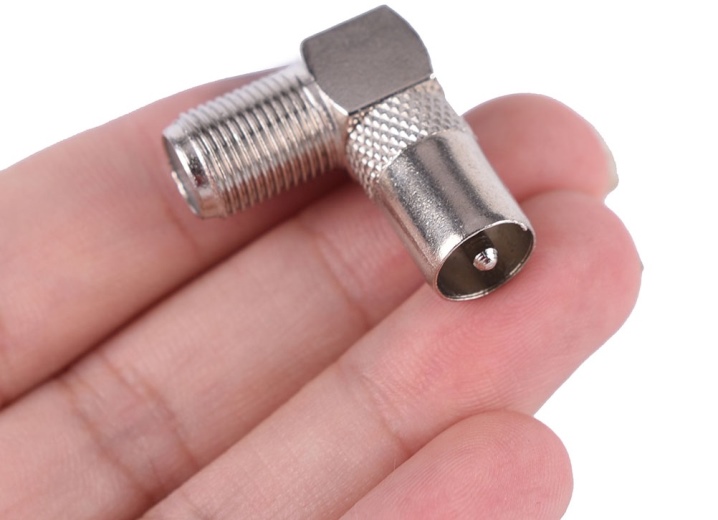
To use this method, you need to perform the following sequence of steps.
- Remove about 3 cm of the outer part of the insulation from the length of the television wire.
- Wrap the opened braid in the opposite direction, due to the fact that the insulation is covered with foil - part of the screen will have to be bent back.
- To prevent the central core from contacting the dielectric, it should be stripped by about 1 cm, this must be done carefully so as not to damage it.
- After that, an adapter is screwed onto the foil, while the main core should protrude by half a centimeter. The remaining unnecessary residue is cut off.
- All these steps must be repeated from the other end, put the plug in the socket and enjoy watching your favorite movies.
How to connect the TV antenna plug, see below.













Thank you, very easy to understand explanation and show. I watched the plug screw on the TV cable.
The comment was sent successfully.